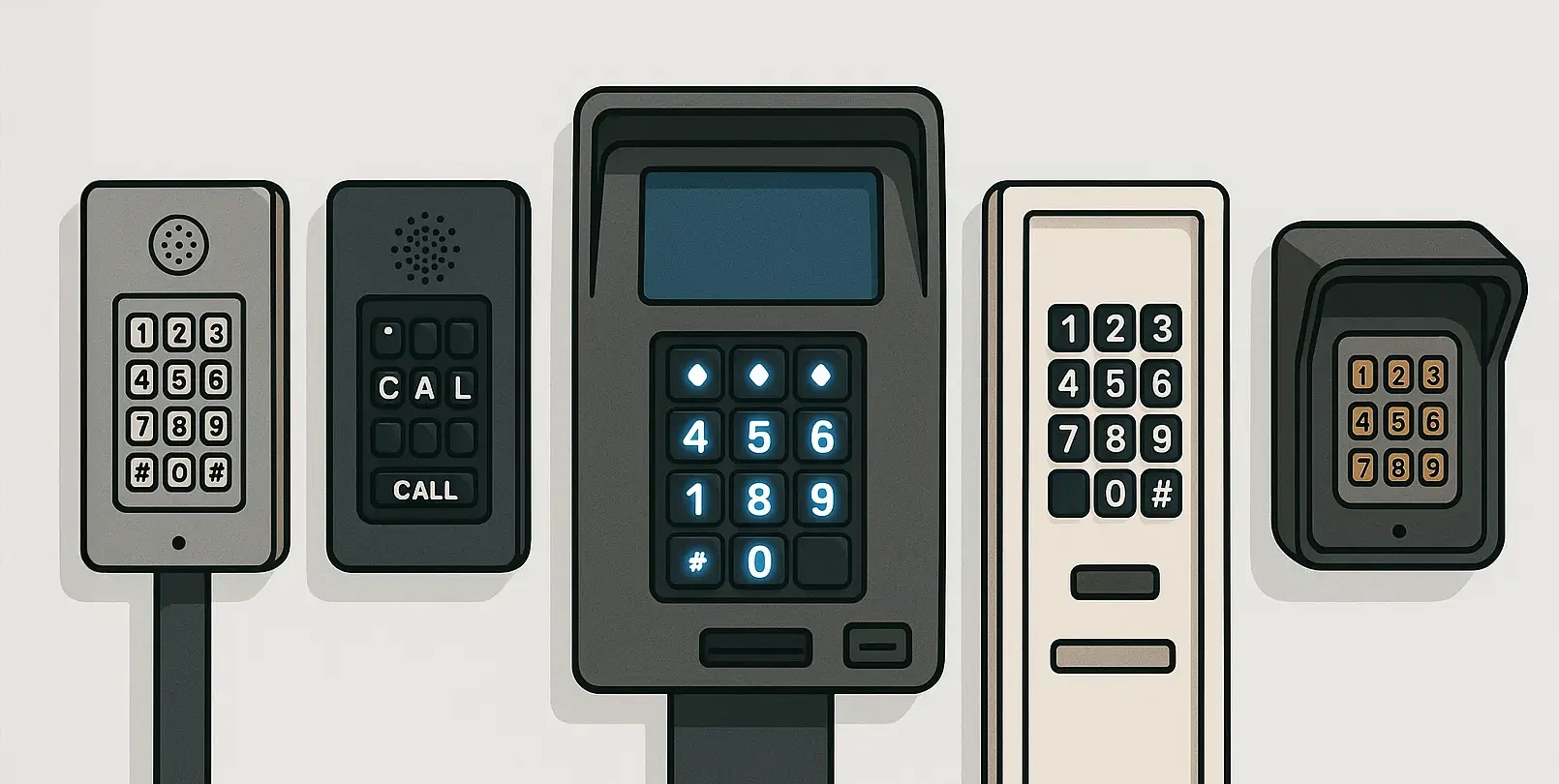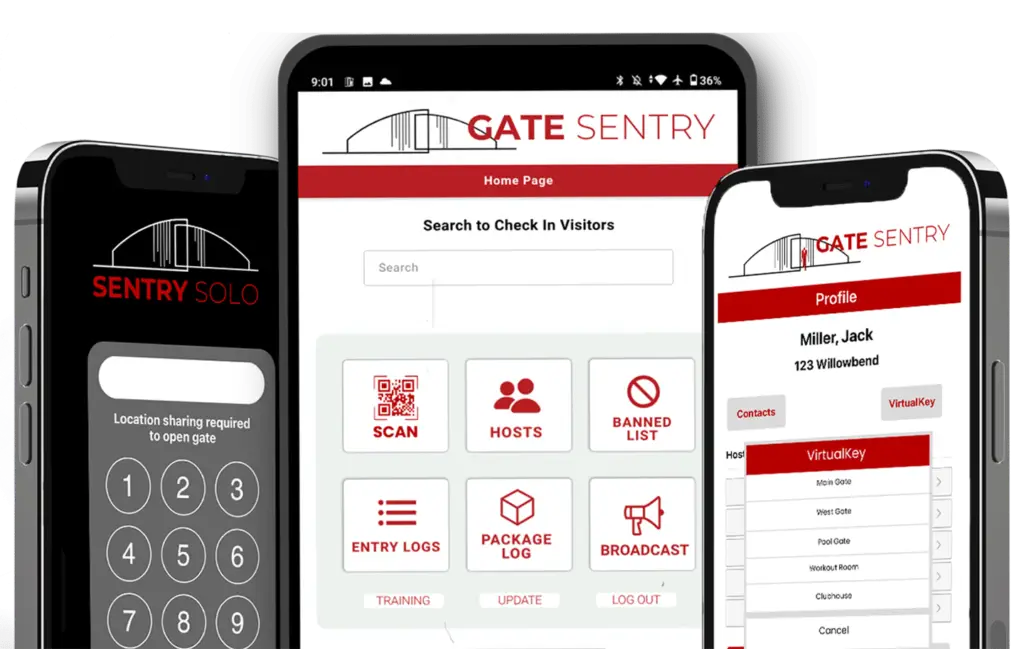20 Questions to Ask Before Upgrading Your Community’s Visitor Management System
Thinking About Upgrading Your Security System? Stop and Read This First
You’re not a tech expert—and security companies know it. That’s why they pitch bloated hardware, confusing software, and “white-glove” support that disappears the moment something goes wrong.
The result? Confused guards. Missed check-ins. Long lines. Your team falls back on calling residents and handwritten logs—because the system you paid for doesn’t actually work.
This blog cuts through the sales pitch. Here are 20 essential questions to ask before committing to your next security system.

Does It Actually Work for Your Community?
Why this matters:
Many systems were designed for office buildings, apartment complexes, or general commercial use—not gated communities with live security staff and heavy visitor traffic. You need a platform that works specifically in your environment, with your challenges in mind.
- Was this built specifically for gated communities?
→ Systems repurposed from commercial use often miss the mark. You need a platform purpose-built for live guard check-ins, guest traffic, and resident expectations. - Will this system help my security team work faster and smarter?
→ A good system streamlines tasks, not adds more. Look for tools that cut down check-in times, reduce manual entry, and support guards in real time. - Will residents actually use it, or keep calling the gate?
→ Adoption is everything. If it’s not intuitive for residents, they’ll go around it—and your guards will be back to answering calls. - Are there tools in place to encourage resident adoption?
→ Built-in onboarding, mobile access, and clear instructions make it easier for residents to adopt and stick with the platform. - Can it be used across all access points—vehicle gates, pedestrian gates, and amenities?
→ A fragmented system causes confusion. Ensure the platform works seamlessly across every gate and entry type.

Ease of Use, Adoption & Training
Why this matters:
Even the most advanced security system is useless if no one knows how to use it. To maximize adoption and reduce frustration, it needs to be intuitive, backed by training, and tailored to the needs of your residents and staff.
- Can residents manage their own guest lists from an app or web portal?
→ Self-service tools reduce reliance on security staff, speed up guest access, and give residents more control over who enters the community. - Do visitor lists update in real time across all devices?
→ Real-time syncing ensures guards see the latest access changes instantly—so no one slips through the cracks and no one gets denied by mistake. - Is there training available for security staff, residents, and administrators?
→ Clear onboarding ensures everyone knows how to use the system correctly from day one—minimizing errors, frustration, and support tickets. -
How does the onboarding process work, and how long does it take to be up and running?
→ A guided rollout with strong communication and in-app support makes onboarding smoother. Most communities are fully up and running within a few weeks, depending on gate staff availability and resident engagement. - Do you have gated community references or case studies to review?
→ Proven results with similar communities help you validate the system’s effectiveness and reduce risk in your decision-making.
Features & Admin Tools
Why this matters:
Beyond day-to-day gate operations, your admins need the ability to monitor, manage, and analyze activity. A strong back-end system improves transparency, accountability, and long-term decision-making.
Is there an admin portal to manage users, monitor activity, and pull reports?
→ A central dashboard allows staff to easily manage users, review logs, and stay ahead of potential issues.Is every access event logged and tied to a specific user for accountability?
→ Timestamps and user-level tracking protect your community and reduce liability by keeping a clear record of who granted access and when.Is there a way to monitor security activity throughout the day?
→ Oversight tools help ensure guards are following protocol, responding promptly, and not bypassing the system.How fast can security check in a visitor using the system?
→ If it takes more than a few seconds, it’s not built for real-world gate operations. Speed matters—both for safety and resident satisfaction- Is the platform actively maintained with new features?
→ A good provider keeps improving—not coasting on legacy code.
Cost, Support & Scalability
Why this matters:
Security systems are a major investment. Before you commit, you need to know the true costs (including hidden hardware fees), the level of support you’ll receive, and whether the platform can grow with your community’s needs.
- How much does the hardware cost—and is it even necessary?
→ Some systems require expensive computers, scanners wiring, and trenching. Others (like Gate Sentry) run on simple tablets. Know what you’re really paying for—and whether you need it. - What kind of support is available if something goes wrong—for security, admins, and users?
→ Quick, reliable support is critical. From gate issues to login problems, everyone needs to know help is just a call or message away. - What happens if the internet goes down—will the system still function?
→ Outages happen. Your system shouldn’t shut down because of them. Offline capabilities ensure uninterrupted access and fewer resident complaints. - Can this system scale across multiple gates or properties as our needs grow?
→ Whether you’re adding more gates or managing multiple communities, your system should be able to grow with you—without starting from scratch. - What happens if the internet goes down—can the system still function offline?
→ A reliable system continues operating during outages, keeping gates secure and access flowing—even without Wi-Fi.
Conclusion: Don't Settle for a System That Doesn't Work
Outdated security systems don’t just create frustration—they create risk. If your guards are overwhelmed, your residents are unhappy, or your system can’t keep up, it’s time to re-evaluate.
Asking the right questions now can save your community time, money, and endless headaches later. The best system isn’t the one with the most hardware—it’s the one your team actually uses, your residents actually adopt, and your admins can actually trust.
Gate Sentry was built specifically for gated communities—no bloated features, no unnecessary hardware, just a simple, powerful platform that makes access control work the way it should.
Related Posts

The Real Cost of Using Keypads and Kiosks for Storage Access Control
For decades, they’ve been the face of self-storage access control. Wired. Clunky. Expensive to install. Even more expensive to fix. In a world of mobile-first, cloud-based tech, so why are we still relying on this?

Best Visitor Management System for Gated Communities
Why Gate Sentry Is the Best Visitor Management System for Gated Communities with On-Site Security Key takeaways Gate Sentry is
Join Our Newsletter

Schedule a Demo
Discover how our services can be tailored to your specific property needs, enhancing both security and efficiency.
